
IndexActivitiesUpcoming eventsSearch |
The Gardens Picture from the late XIX Century There is no country house in Lombardy that reflects the genius of Renaissance architecture more than does Villa Cicogna Mozzoni, where interior and exterior spaces blend into a graceful, co-ordinated whole. 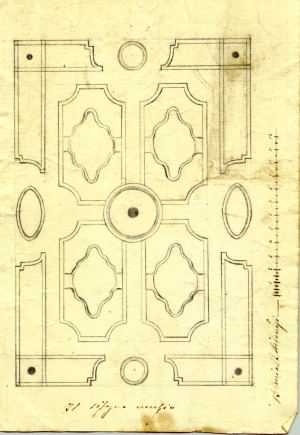 Map of a parterre in the formal garden Rather than the garden borrowing its layout from the house, it is the building which seems to throw itself open to the magnificent views outside, creating a perfect balance between garden and villa. 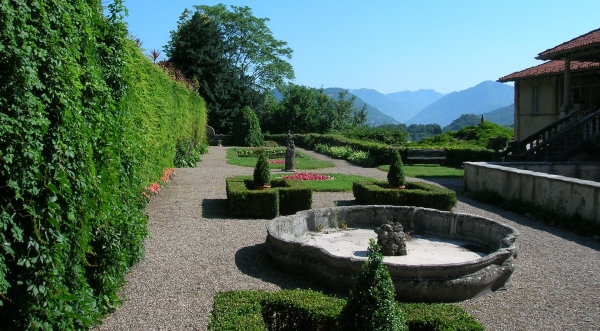 Northern terrace The garden, in the central part of which has remained intact, was set out around 1560 by the same Ascanio Mozzoni, a man of culture who in his travels to Florence and Rome absorbed the new architectural ideas of the day, which were then being developed in the Medici and papal villas. 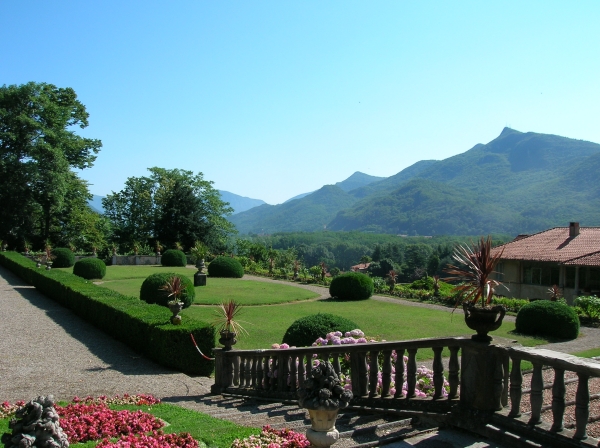 Northern terrace The two arms of the U-shaped Villa Cicogna Mozzoni open out on to a flawless formal garden enclosed at the end by a wall of porous stone (probably inspired by the grottoes of the Villa Medici at Castello in Florence) which is hollowed into niches filled with statuary. 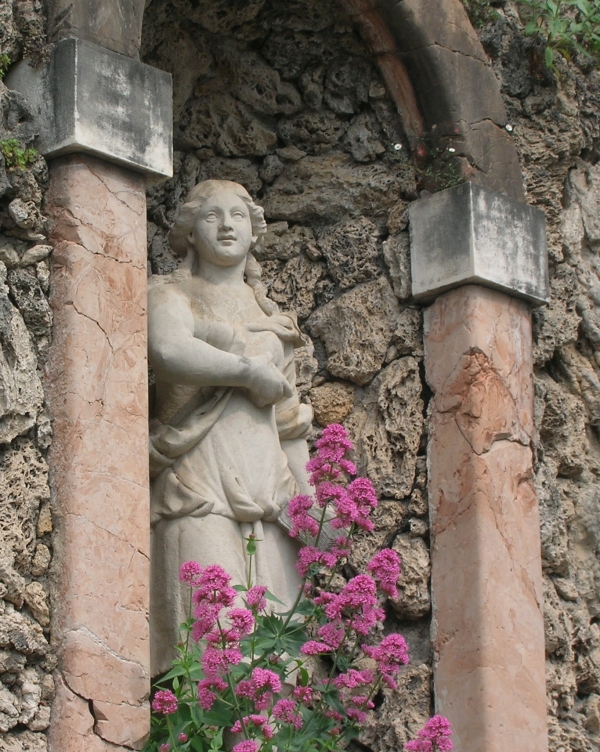 Statue in the tufo wall Balustrade extends along the top of the wall and also enclosed two rectangular pools at ground level. The wall is the same height as the ground floor of the house, with the result that the garden appears to be an extension of the villa, like a magnificent open-air living room furnished with statues and fountains. The ground floor of the two arms of the villa consists of aerated loggias, their ceiling frescoed with floral motifs, garlands and wine branches, linking the outer and inner spaces and letting the light of the garden into the halls and reception rooms. 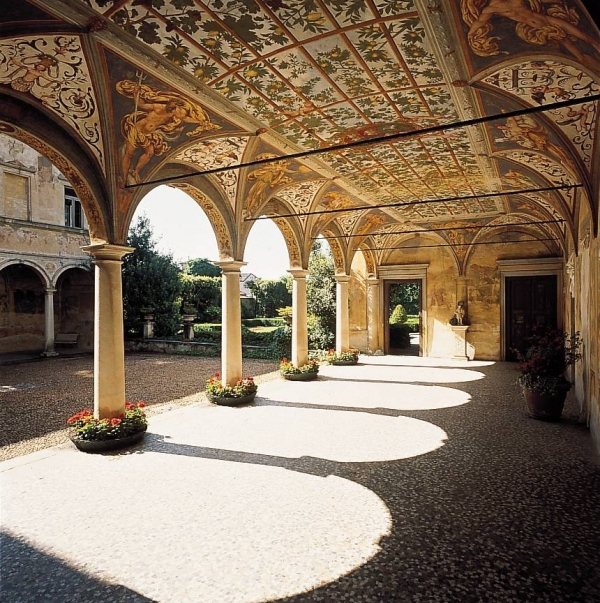 The Portico (Foto di Robert E. Bright) The frescoes, the work of Giulio, Antonio and Vincenzo Campi of Cremona and their school, were painted not long before 1560 (according to Giacomo Bascapè, a contemporary historian) and perform a strictly architectural function of transition: the portico space belongs in volume to the building but in decoration and colour to the garden. Its frescoes recall those of Giovanni da Udine in the Farnesina in Rome, where gardening combines seamlessly with the architecture through the medium of painting. 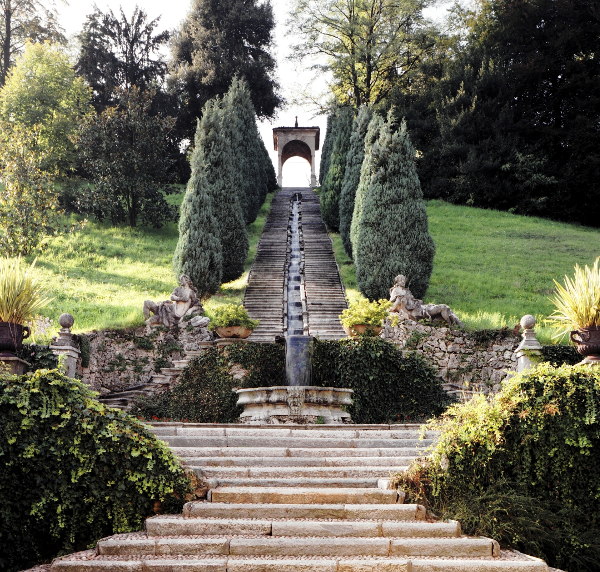 Staircase with 156 steps (Photo by Vincent Berg) Following the slope of the hill, which rises beyond the wall at the end of the Renaissance garden, is one of the most celebrated water staircases of the sixteenth century: a double row of cypress trees guides the eye from a portico at the top and down two parallel flights of stone steps between which a stream of water flows spilling into a fountain set on a level with the windows of the great hall on the second floor of the villa. A large terraced laid out in a traditional Italian style provides a physical and visual link between the water staircase and a terraced garden on the other side of the house looking towards Lake Lugano. It also offers a sheltered place in which to walk and enjoy the views of the parterre and surrounding landscape. |